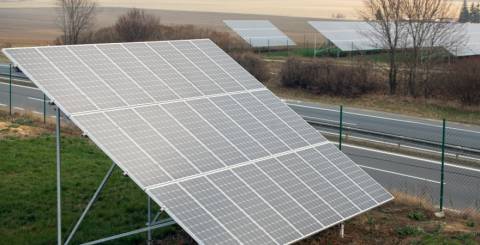Solar Surge Protection

Most people today understand that there is a way to create electricity using free energy sources like the sun and wind, but far fewer actually understand the way that the technology works to accomplish that goal, and what the costs are that go into the process. When making a comparison to the fossil fuel industry, people can easily understand that the costs of production come from the salaries of the people who work in plants, the costs to store and transport the electricity to consumers, and the costs associated with either mining or purchasing the oil or coal that will be burned in order to generate the electricity. This is confusing to many consumers when they consider the green energy technologies that use fuel sources that are free. If there is no cost for the sun or wind, then why does it still cost more to produce power using these sources? The answer to the question is that the maintenance costs of the equipment are higher because they sustain more damage than the equipment used for fossil fuel production, and therein also lies the potential for improvements.
The costs associated with green energy (and solar power production in general) is based in the repair and replacement of high tech equipment associated with the process. Solar panels are not the only components involved in the process, and they are actually controlled by computerized equipment that has high costs associated with it. This equipment is subjected to the harsh climate of remote areas where solar fields can be located, but is especially prone to damage caused by lightning strikes and the associated power surges. Lightning strikes to solar panels are common due to their remote locations and the fact that they are generally the tallest structure in an area due to the need for unobstructed sunlight. Lightning strikes are expected to solar panels, and replacement costs are figured into the prices that are paid by consumers. While it is difficult to eliminate these repair costs, the surge that is generated by the strike will generally cause more extensive damage to equipment than the strike itself with respect to cost, and can be effectively prevented by the installation of industrial grade surge protection equipment. These devices can break the connection between the point of the strike itself and the equipment that is connected to that strike point through power lines. The surge will be far greater than the circuitry inside these pieces of equipment can withstand, and surge protection devices effectively stop the surge before it reaches any of it. This provides protection for the equipment in order to reduce replacement costs, but even these advancements are still not enough to reduce production costs to the point of being lower than fossil fuels.
The latest solar surge protection equipment now has the ability to remain functional even after a surge event. This allows solar production facilities to stay online even after a lightning strike has happened, instead of the older technology which essentially breaks the connection until it is restored by a maintenance worker. This time spent offline while the sun is still shining reduced the capacities that the plants could produce during any period, and inflated costs as a result. Through the advanced surge protection equipment now available, these facilities can stay online and producing for the maximum amount of time the sun is shining, thus producing the maximum amount of power that is capable of being produced. The integration of these new technologies has the potential to bring the costs of production down below that of fossil fuels, making the debate over the superiority of one method of production over another obsolete. If it costs less and causes less damage to the environment, there is no reason to not use it.
Similar Articles
Explore how data science is transforming the fintech industry, driving innovation, improving decision-making, and revolutionizing financial services.
In today's competitive business environment, companies are continually seeking ways to enhance efficiency, improve decision-making, and streamline operations. Enterprise Resource Planning (ERP) software has emerged as a vital solution, integrating various business processes into a cohesive system
Ultrasonic cleaning is a powerful, non-invasive method for removing contaminants from surfaces. Using high-frequency sound waves, ultrasonic cleaners create microscopic bubbles that implode upon contact with dirt, oils, or grime, effectively lifting them off.
When we think about efficient transportation within large buildings or crowded areas, we often imagine escalators or elevators. However, there’s another key player in the world of horizontal transportation: moving walkways.
Discover 6 essential IT security policies to protect your organization from cyber threats. Build a robust, compliant, and secure infrastructure today!
Nowadays, the IT world is not imaginable without the cloud. It is extremely difficult to replace the cloud because the technology is bound to evolve. In this constantly changing technology world, nothing can be forecasted. Nevertheless, the cloud has deployed itself in such a way that has become irreplaceable.
A Data Management Platform (DPM) can be defined as a smart assistant that collects data or information from various places, such as websites, apps, and customer databases. A detailed description of the customers is then generated, which contains information about their preferences and behavior
Software testing is imperative to the software development lifecycle, typically ensuring that applications work as intended and fulfill user expectations. Test Data Management (TDM) has become a rather crucial aspect of effective software testing.
It has been amply evident that there is a keen focus on delivering quality software products quickly. Here, DevOps emerges as an effective solution to meet such market demands. After all, it enables organizations to accelerate software delivery while improving business outcomes.









